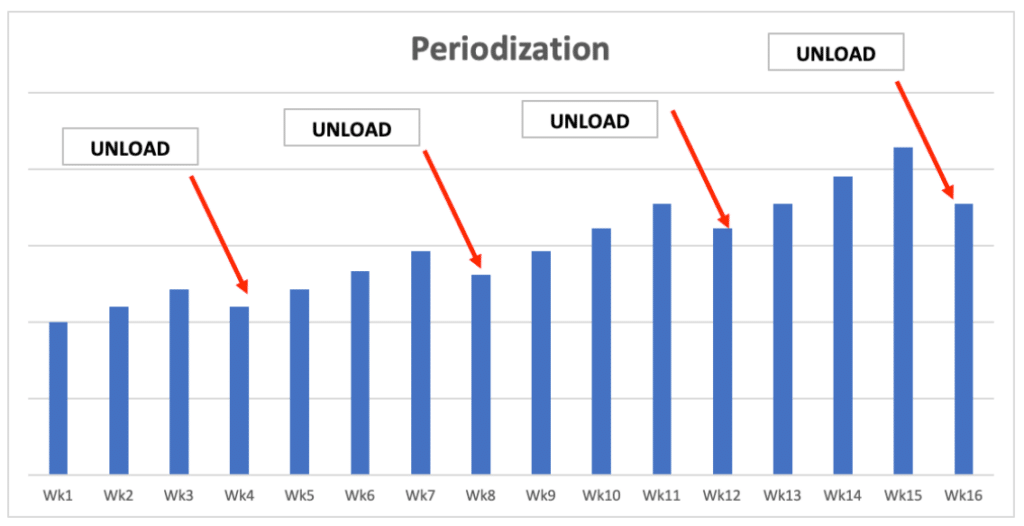Did you know that there is a specific way to exercise for thyroid and adrenal health?
I was surprised when I learned this, too!
When I was walking through severe symptoms of Hashimoto’s, I started working with my practitioner and saw good improvement in many of my symptoms, but I kept noticing that whenever I’d do HIIT workouts or bootcamp I had to be on the couch for the rest of the day.
I had been taught that you push harder to get the results you want, so I kept going. Then, one day I told my brother, Erik Korem, about my struggle. He told me that this wasn’t the right way to be exercising, that I was pushing my body way too much, and was probably prolonging my healing.
He wrote an exercise program for me that gave my body the exercise it needed but without pushing it to exhaustion. Within a couple of weeks, I noticed a huge difference in my energy and was so excited that I could exercise, not wear myself out, and also heal at the same time!
Maybe you are like I was and you think you have to exercise harder, longer, and faster in order to see the results you want. Maybe you’ve even tried that, and you were left wondering why your hard work didn’t do anything except leave you exhausted.
The great news is, it’s not your fault! The even better news is, I’m going to share with you the information that my brother taught me that will promote hormone balance, weight loss, and greater strength and endurance.
In this article, you will learn:
- How exercise can set you back
- The sympathetic vs. parasympathetic nervous response
- General Adaptation Syndrome
- How to train to fix the problem instead of making it worse
- The power of the parasympathetic shift
- Exercising in the right heart rate
- Diaphragmatic breathing
- The power of periodization
- Periodization in exercise
- To do’s and not to do’s
- Where to find the right workout plan
How Exercise Can Set You Back
You’ve probably heard that stress is bad for your body. But did you know that exercise is a form of stress?
Not all stress is bad, though. When stress is used the right way, it can actually help the body to grow and develop. The goal is to use exercise in this way in order to produce better outcomes in the body.
It’s when stress becomes chronic that it can be troublesome. Chronic stress, including improper exercise habits, can be a major root cause for adrenal fatigue, thyroid disease, and hormone imbalance within the body.
When stressed, the adrenals produce cortisol. If stress is prolonged, the adrenals become fatigued and the HPA (hypothalamus, pituitary, and adrenal) axis begins to deregulate. This can lead to adrenal and thyroid imbalance.
Signs You May Be Exercising the Wrong Way:
- Poor recovery from exercise
- Lack of energy throughout the day
- Inability to lose weight, especially around the midsection
- Poor sleep
- Hormonal imbalances
- Digestive Issues
Exercise’s Effect on the Nervous System
The autonomic nervous system is an important part of the nervous system. It controls and regulates involuntary physiologic processes such as heart rate, blood pressure, respiration, digestion, and sexual arousal.
The sympathetic nervous system is the division of the nervous system that initiates the fight-or-flight response under conditions of stress.
The parasympathetic nervous system controls visceral organs such as glands. It includes the cranial nerves, of note the vagus nerve. When stimulated, the parasympathetic system initiates digestion and improves relaxation. We’ll call it the “rest and digest” state.
Exercising too often, too long, or too intensely can cause our body to get “stuck” in the sympathetic (aka fight-or-flight) state. When this happens, we’re unable to return to the rest and digest state, which is when our body is best at healing, detoxification, repair, and rest.
General Adaptation Syndrome
General Adaptation Syndrome (GAS) is a term that describes the physiological changes the body goes through when it responds to stress. It was first studied and developed by Hans Selye in 1936.
The Four Stages of GAS:
1. Homeostasis
2. Alarm
3. Resistance
4. Exhaustion
When we become chronically stressed through improper exercise (in combination with other factors), we never return to proper homeostasis. Instead, we stay in exhaustion.
This can be the case even if the body outwardly looks okay. Inwardly, it is depleted.
When stuck in the exhaustion phase, the body can’t handle stress. It is more susceptible to disease, sickness, and infection.
Train to Fix the Problem Instead of Making It Worse
Most programs and trainers think the only way to get results is to push harder. This couldn’t be less true.
In fact, when dealing with adrenal fatigue or thyroid dysfunction, this type of intense training is most often counterproductive. Exercises such as HIIT, CrossFit, Orange Theory, etc. while good for many people, are largely not good for people in the GAS stages of resistance or exhaustion.
As referenced earlier, exhaustion can happen when the adrenals need to continuously produce cortisol due to chronic stress. One common symptom of cortisol/adrenal imbalance for women is weight gain around the mid-section.
As counterintuitive as it may sound, the only way to trim down the midsection is to pull back on the workouts and intensity to get the body out of the sympathetic and into the parasympathetic state.
A Better Way to Exercise for Thyroid and Adrenal Health:
- Limit training sessions to 2-3x a week. Less is more (you want to shift into a state of recovery!).
- Reduce the length of your training sessions and/or intensity of weight lifted. Instead, focus on lower intensity exercise in a rep range of 6-10 reps.
- Don’t train for more than 60 minutes at a time.
- Listen to your body (How do you feel after training? Should you take the day off?). The mark of a great training program is that you stimulate a good response in the body rather than leaving the body absolutely depleted and fatigued.
The Power of the Parasympathetic Shift
Exercising the right way puts our body into the rest and digest versus the fight-or-flight state. Proper exercise energizes the body, helps balance the hormones, strengthens the muscles, increases endurance, and more.
Exercising in a Specific Heart Rate
Exercising in the correct heart rate range actually stimulates the body to relax. When exercising, your heart rate should stay between 60-70% of your maximum heart rate.
An easy way to estimate your maximum heart rate is by using the following equation:
Max heart rate = 220 – (Age)
Diaphragmatic Breathing
Diaphragmatic breathing is another effective way to shift the body into the parasympathetic state by impacting the blood volume that flows through the heart. This type of breathing stimulates the vagus nerve, causing the heart rate to slow and the body to calm down. You can think of it as “putting the breaks on.”
The key to diaphragmatic breathing is to take deep, slow breaths, making the exhale longer than the inhale. Breathe deeply out versus breathing deeply in, and attempt to double the duration of the exhale. Start small for just two minutes and work your way up to ten minutes or so.
Diaphragmatic breathing reduces systemic inflammation, increases immunity, and decreases cardiometabolic risk factors such as high blood pressure, bad lipid profiles, etc.
Utilizing these methods can gradually shift you from a sympathetic to a parasympathetic state.
The Power of Periodization
Exercising the right way means stimulating the body to get good outcomes instead of annihilating the body, causing more damage.
What is Periodization?
Periodization is systematic planning to improve performance.
But why does performance matter for someone who isn’t a high-level athlete or competing in a sport? Because peak performance simply means you consistently have the energy and focus to be at your best for what you do. That’s important for all of us.
Periodization allows for something called supercompensation. This is when your homeostasis baseline becomes higher through the proper balance of exertion and recovery. In other words, over time your body can learn to handle more stress at less cost.
When you combine the right amount of exercise with the right amount of recovery, you can keep your body from entering a state of exhaustion.
What Does Periodization Look Like in Exercise?
Instead of going all out all the time, it’s better to slowly increase the volume (how long, how many reps and sets) and intensity (effort) of your exercise before you reach exhaustion. Then, pull back and allow the body to recover.
For example, a 16-week program might be structured to increase gently in effort and intensity for 3 weeks. The fourth week would be an “unload” week that is easier than the one prior.
Properly planned exercise helps balance hormones, lose weight, increase energy, and make progress toward whatever health goal you may have.
To Do’s and Not to Do’s When Working Out:
What to do:
- Have higher intensity days followed by lower intensity days in order to recover
- Follow a plan that progressively increases the intensity of your workout and has periodic rest days, preventing burnout.
What not to do:
- Work out every day for the same duration and intensity
- Go as hard as you can as often as you can until you “feel” like you need a break
A Final Note
Exercise can either be a detrimental or beneficial form of stress.
When engaged incorrectly, exercise depletes the body, exacerbates symptoms, and pushes us further into adrenal fatigue, thyroid dysfunction, or other hormone imbalances.
When used correctly, exercise can be an incredible tool for shifting the body into the parasympathetic system to initiate healing and recovery. It all depends on the length, intensity, type, and format of the exercise. And the great news is, you can make the shift!
Exercise properly to see the results you desire and experience improved health!
This article was written as a team effort between Erik Korem, PhD, Carrie Vitt, NTP and Theresa Meacham.










